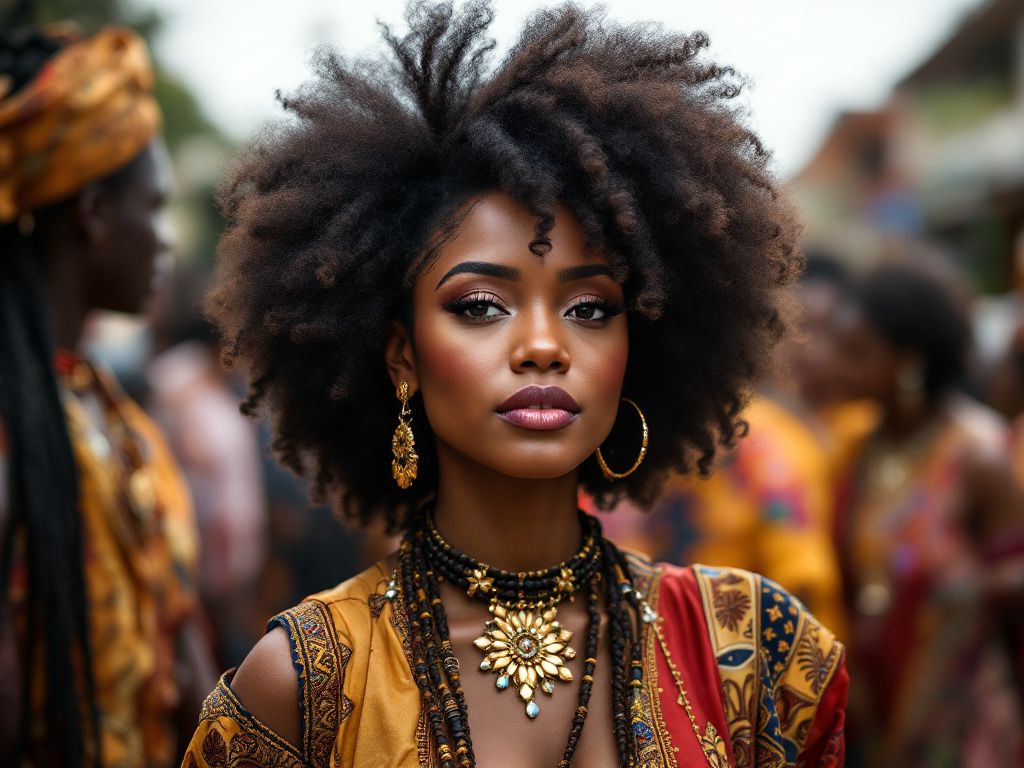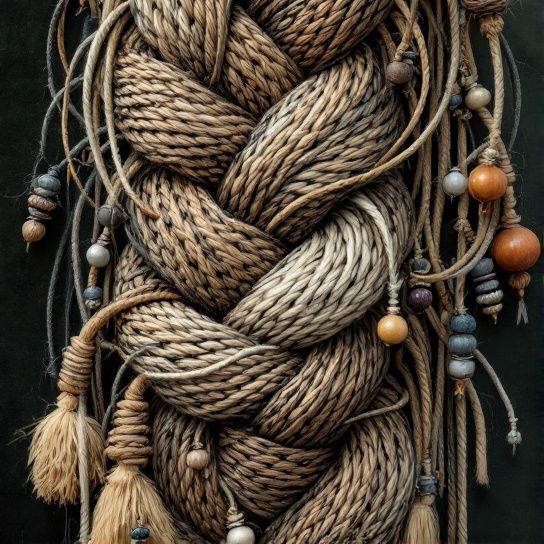
Ever glanced at your reflection and thought, “I want my hair to tell a story”? Well, you’re not alone. Many of us are exploring cultural hairstyles to bridge the past and present, celebrating our heritage in a way that’s both personal and powerful. So, let’s dive into the world of cultural hairstyles—a fascinating way to showcase your roots, quite literally.
Why Cultural Hairstyles Matter
First, let’s think about why cultural hairstyles are so impactful. It’s not just about looking good, though that’s definitely a perk. These hairstyles are like little time capsules, ways for people to connect with their heritage and share their culture with the world. A hairstyle can speak volumes about who we are and where we come from. It can even feel like wearing a piece of home everywhere you go.
You might have folks asking, “Why is this important?” Picture this: you’re at a multicultural festival, each attendee proudly flaunting styles that reflect their lineage. Braids, locs, afros, top knots—each one tells a story of endurance, identity, and creativity. They’re more than just aesthetics; they’re traditions literally woven into daily life. By embracing cultural hairstyles, you acknowledge and uplift your history and the stories embedded within it.
Embracing the Power of Braids
Let’s kick things off with braids, shall we? This style goes way back—like, we’re talking ancient times here. Braids can be found in cultures all over the world, from Africa to Scandinavia. Each culture has its versions and meanings attached to them.
African Braids
Africa is a massive continent, filled with diverse cultures, and each has its unique take on braids. Take cornrows, for instance. Not only do they look stunning, but they also offer a history lesson. These intricate patterns and lines have served as maps and symbols of social status and ethnicity.
If you’ve ever considered cornrows, here’s a tip: practice patience. It takes time to perfect those intricate patterns, but trust me, it pays off. Head over to a seasoned hairstylist who specializes in cultural hairstyles for the best results.
Scandinavian Influence

Travel north to the Viking age, and you’ll find warriors wearing braided styles that were both functional and fierce-looking. These aren’t just for history buffs or reenactments—they’ve surged back into fashion with a modern twist.
For those seeking to channel their inner Norse spirit, focus on tight, compact braids which can be adorned with beads or cords, infusing an authentic touch. Try this out next time you want something different—it’s both bold and elegant.
Afro-textured Hair and Its Glory
Now, we’d be remiss not to discuss the beauty of afro-textured hair—a celebration of texture and volume! Black hairstyles have long represented a form of identity, respect, and reflection of community ethos. Whether it’s a luscious Afro, coils, or a twist-out, these styles stand as symbols of cultural pride.
The Afro
The Afro became a potent icon during the civil rights movement and remains a treasured emblem of cultural pride and natural beauty. Embracing your natural texture this way is pretty empowering. Plus, it’s an opportunity to show that volume and natural curls are gorgeous just as they are.
With this style, moisture is your best friend—invest in a solid leave-in conditioner to keep things lush. It sounds simple, but seriously, it makes all the difference.
Protective Styles
Twists, coils, and locs are more than just a hairstyle; they’re a protective armor, too. They shield hair from breakage and facilitate growth. Protective styling isn’t just practical—it’s a great way to give your hair a little tender, loving care while looking fiercely stylish.
Try This: Twist and Shout
If you’re new to protective styles, starting with two-strand twists can be a game-changer. They’re relatively easy to manage and offer versatility if you fancy switching things up periodically.
Asian Cultural Hairstyles: A Path of Elegance
Don’t wait to explore the far corners of Asia, because the hair heritage here offers an abundance of astonishing styles as well. From Japan to India, traditional hairstyles are dripping with elegance, symbolism, and innovation.

Japanese Traditions
In Japan, the every-day beauty of simplicity reigns supreme along with elaborate beauties like the Geisha-inspired Shimada. Historically, this particular style indicates marital status and nobility, showcasing how a simple coil or bun could narrate personal documents of time.
Bun It Up:
Considering a Japanese-inspired look? Engage with the chignon bun—graceful, timeless, and wonderfully minimal. Keep it sleek, and if you really want to dive deep, explore traditional hair sticks to secure your style with flair.
Indian Braid Romance
On the opposite end of the spectrum lies India, thriving with lively, complex braids. These styles could take the viewer back through centuries of crafty hair art showcasing matrimonial and religious symbolism.
Braid Artistry
Why not try the lavishly adorned versions seasoned with blooms of jasmine? You don’t even need an occasion—perfect those long twists for an eye-catching statement whenever the moment calls.
Latin American & Indigenous Influences: Vibrantly Diverse
Don’t even get me started on the cultural hairstyles adorning Latin America’s rich mosaic of identities. Often steeped in prehistoric indigenous significance, styles from this region are as vibrant as the people. Think radiant ribbons and dramatic plaits, each representing a piece of history and creativity.
Indigenous Aztec Beauty

Historically, hair for indigenous peoples was a deeply embedded symbol connected to cultural identity, wisdom, and communal tales. The Aztec Double-braid indicated nobility intricately while enveloping strength within its ties.
**Consider This: Double-Braid Adventure**
Get creative by combining both narrow and wide braids to mimic this ancient grandeur. It adds beautiful texture and makes a bold cultural statement users can stand by.
Modern Mixed Cultures: A Blend of Traditions
Contemporary culture is a buzzing concoction of cultural influences that’s not fixed on a set boundary. It thrives on blending, fusing these beloved heritages into something vibrant and perhaps a little less defined.
Fusion Hairstyles: The New Norm
We live in a mixed, dynamic society where comfort in identity and cultural acknowledgment can effortlessly merge. Enter fusion hairstyles. They celebrate not only single heritages but the beautiful blend of nowadays multicultural interlacing styles.
**Pro-Tip: Find Your Unique Spin**
Mixing French braids with indigenous tapestries, or a seamless union of cornrows with Italian twists, this reflects your uniqueness. Use customs not only as influence but as guideposts to nurture your stylistic harmony.
Conclusion: Hair as a Historical Heirloom
The world of cultural hairstyles is broad, raw, and vividly contextual in the modern tapestry of identity celebration. Hairstyles weave personal narratives while liberating the uninhibited beauty tradition inherent within.
So the next time you’re at a crossroads in front of a mirror or a salon menu board, give traditional cultural hairstyles a go—they bring along character, charm, and celebration. Besides, it’s not just another look; it’s a story-propelled legacy.
Whenever you tell your hair’s story, pause and relish who you are, where you came from, and everything your heritage represents. It’s more than fashion—it’s a chance to carry and convey culture, now and in the unrecorded tomorrows.
Frequently Asked Questions
What is the cultural significance of hairstyles across different societies?
Hairstyles have significant cultural meanings across various societies, often symbolizing age, marital status, social status, and religious or ethnic affiliations. For example, in ancient Egypt, hairstyles indicated social status and personal identity, while in Japan, traditional hairstyles like *Nihongami* reflected a woman’s age, social status, and occupation[1][3][5).
How have hairstyles been used as symbols of resistance and identity throughout history?
Hairstyles have been used as powerful symbols of resistance and identity. For instance, cornrows were used by enslaved Africans as a method to send messages and maps to escape from slavery. Similarly, dreadlocks have been associated with resistance and spiritual identity in various cultures, including the Rastafarian movement[3][5][1).
What are some traditional hairstyles that indicate specific roles or statuses in their respective cultures?
Several traditional hairstyles indicate specific roles or statuses. For example, the queue in ancient China was a sign of submission to the ruling Manchurians, while the *chonmage* in Japan was the traditional samurai top knot. In some African cultures, braids and dreadlocks signify age, marital status, and spiritual identity[1][3][5).
How have hairstyles evolved over time to reflect societal changes and cultural shifts?
Hairstyles have evolved significantly over time, reflecting societal changes and cultural shifts. For instance, the 1920s bob symbolized the liberation of women during the Jazz Age, while the 1960s counterculture movement saw the adoption of longer, free-flowing hairstyles as a rebellion against conservative norms[1][3].
References


Leave a Reply